Recipe Lion’s astonishing growth a product of email, SEO and social media
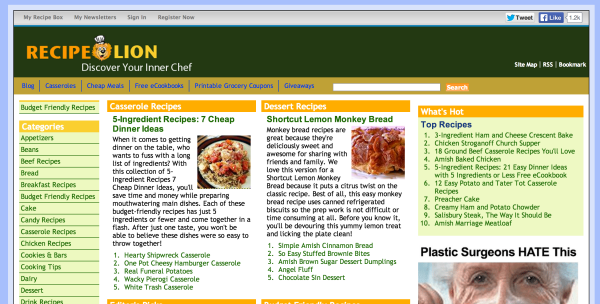
“Give consumers what they want.” That’s both the motto and the business model at Prime Publishing, where a whopping 17 craft websites and 13 food sites – including one recently-launched site in each category – have led the company’s success since its founding in 2009.
When President Stuart Hochwert, a Mequoda Master, launched these sites, he had exactly nothing to start with. No legacy publications, no content, nada. And while digital magazines are in its future, Prime’s primary focus right now is still subscription website publishing, all of it advertiser-supported.
Recipelion.com was one of the earliest of Hochwert’s creations, and today he estimates that it contributes 8-10% of the company’s revenues. In 2009, the site saw an average of 126,000 unique monthly visitors – and after astonishingly steady growth since then, that number is now at almost 900,000.
For an advertising-driven site, 7X unique visitor traffic growth is a very happy number indeed.
The subscription website publishing trifecta: Selecting content, driving traffic and converting visitors
So how does Prime Publishing’s team do it? As Hochwert always says, it’s all about the audience. Not a single recipe lives on Recipe Lion that has not received the seal of approval in some way from subscribers. No editor can say airily, “But these recipes have always been popular, I don’t care about what the reader data says.”
The model for all this, as Hochwert explained at last October’s Mequoda Gold Member Summit, starts with creating, aggregating and reviewing original content. Editors sit down every Friday to discuss data from the website, including top site searches from Prime’s content management system and top organic pages from Google Analytics.
There’s also a monthly clicks report which impacts content selection as well. And there’s a list of the most popular recipes on the site, which is monitored and updated a couple of times a day, so both readers and editors know what’s hot.
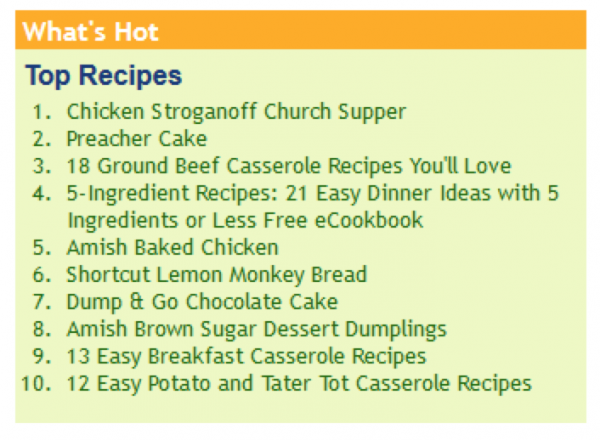
[text_ad]
And all of this vigorous subscription website publishing works hand-in-hand with SEO: Subscribers share this carefully-selected content with their friends, driving up traffic and in turn generating higher search results page rank from Google … which, of course, drives more traffic to this successful subscription website.
In addition, Recipe Lion’s keyword pages feature long-tail, low-competition keywords for specific foods or types of food – caramel apple recipes, dips and spreads, dinner for four.
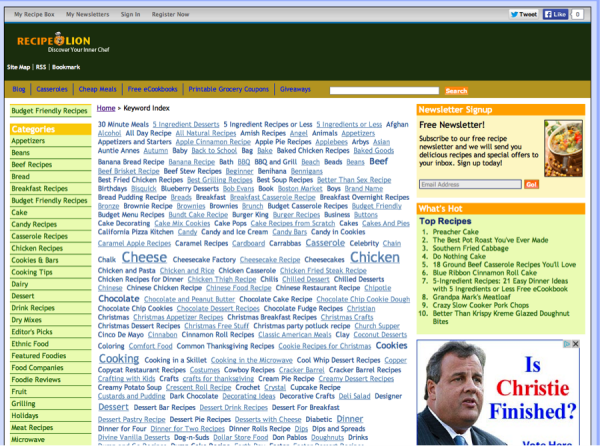
The third leg of Recipe Lion’s traffic generation model is social media. As a consumer publication, it thrives in places like Facebook, Pinterest and Twitter. On Twitter, RecipeLion editors continuously tweet recipes. And for the other two, mouthwatering photos drive the love, like an unusual strawberry shortcake with 117 likes and 199 shares in five days since it was posted.
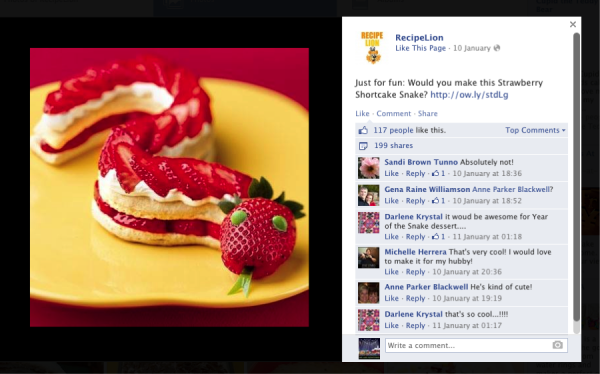
All RecipeLion editors have quotas for tweets, Facebook posts and pins.
As a Mequoda Method website, of course, conversion of all these unique visitors into subscribers is the final piece of the puzzle. Once a random visitor arrives at Recipe Lion, of course, she’s greeted by a floater offering a free newsletter, Quick and Easy Recipes, that delivers even more recipes than the free ones on the website.
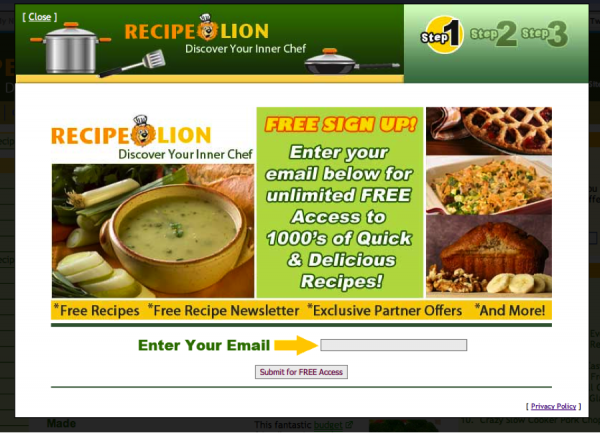
But that’s not the only way Recipe Lion harvests email addresses. The visitor might decide to sign up for a recipe box, or enter a giveaway contest. Bonus points for Recipe Lion: Entering a contest also gives consumers the top social sharing icons like Facebook, Google+, Twitter and Pinterest to spread the fun!
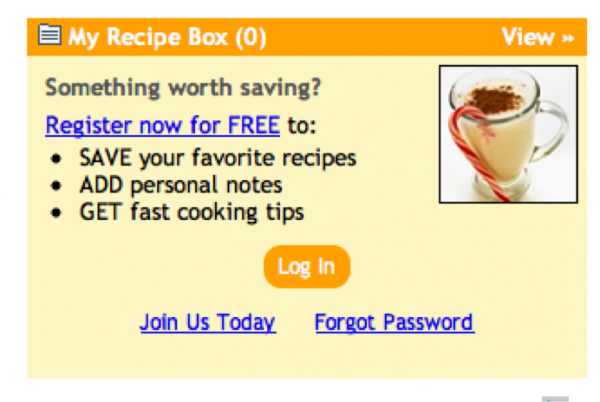
Meanwhile, newsletter content also gets the once-over via data. Editors meet every Tuesday to review data for their content: specifically, open and click rates for email newsletters, compared to the week and the year before.
[text_ad]
The user experience
Once the visitor signs up for the newsletter, she gets three more offers for various sponsor products. Of course advertising is included throughout the site and in the newsletters, since this subscription website is free to all subscribers.
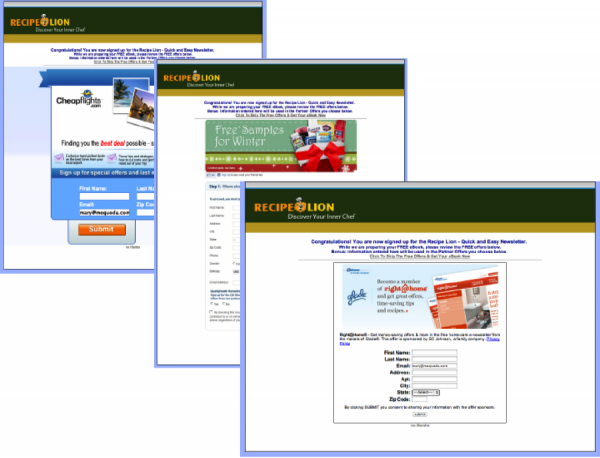
Once the visitor is finished with these offers, she’s taken to the homepage, where the cooking fun begins. The navigation bar features tabs for the blog (which is the same for all Prime cooking websites and features content from all of them, thereby encouraging users to wander over to and subscribe to additional Prime sites), casseroles, cheap meals, free eCookbooks, printable grocery coupons and giveaways.
Did I mention that the free eBooks also require registration? By my count that’s four different ways Recipe Lion tempts you to hand over an email address! This is subscription website marketing at its best.
But back to the homepage. The right rail features a banner ad for the newsletter, the Top 10 recipes, third-party banner ads and a list of free eCookbooks, in that order. At the bottom is a display of social media site logos to encourage users to “connect with us.”
The left rail features a clickable list of all the categories of recipes that Recipe Lion offers. Four more categories are featured in the center of the page, each with a snippet of content about the marvels of the featured recipe and a list of additional recipes in that category.
Click on any recipe, and you get a page with a printable recipe with options to print, save or share, an OFIE at the top for a related free eCookbook, related recipes and your recently viewed recipes, and oh, yes, a whole lot of advertising, even in the middle of the recipe. There’s even a new Top 10 recipe list, to encourage users to stay engaged in the website even after they find the specific recipe they wanted for tonight’s dinner.
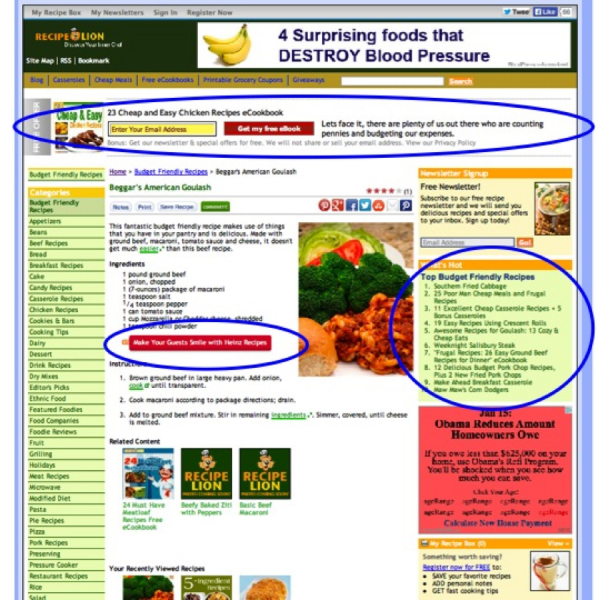
In all, Recipe Lion’s subscription website publishing efforts are exhaustive, meticulous and rigorously documented, all to keep visitors coming, converting, liking and converting to companion sites, over and over. No wonder advertisers are happy to support this site, even as it competes with hundreds of other, better-financed cooking websites. It just shows that you don’t have to be Condé Nast to compete in a crowded field.
But Hochwert, ever the publishing master, isn’t going to rest on his laurels. Prime has been working more with bloggers to create new content. “Bloggers find working with RecipeLion.com as an opportunity to have their recipes in our newsletters, on our web site, and in our free eCookbooks, and to be seen by hundreds of thousands of our subscribers,” says Hochwert.
This is a win-win situation for everyone. “The bloggers create great content, and we allow our audience to enjoy new recipes and learn about great home cooks, up and coming bloggers and famous chefs.”
In turn, this generates new daily content for Recipe Lion’s e-mail newsletter, website and social media efforts. “These efforts combined provide a natural buzz in the foodie community and an occasional quality link back to our site,” Hochwert reports.
Other efforts in the new year will include testing new social media outlets, to determine if sites like Tumblr or apps like Jelly could help Prime websites grow. After all, traffic coming to Recipe Lion from Pinterest increased 215% in 2013, and Facebook traffic surged 213% from 2012, so social media is clearly a winner for the site.
Are you a multiplatform publishing master like Hochwert? How else can a small publisher compete in subscription website publishing? Do you have any tricks that Prime hasn’t thought of?


